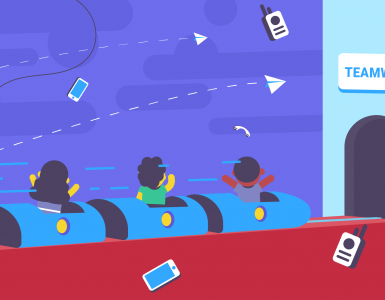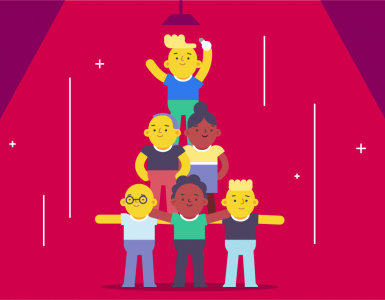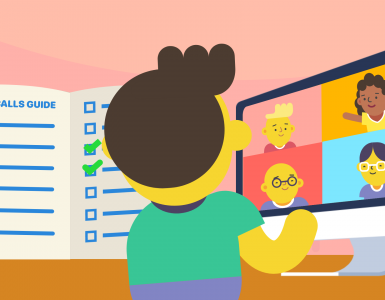In our connected world, there are tons of information bits swirling around. The workplace is no exception. Multiple projects are going on at once, departments working together, and customer data is being processed.
With so much data and communication bouncing around, it can be difficult to tell what is most important and what tasks need attention first. As a result, individual productivity fails, dragging teamwork down with it. Some studies estimate that up to 25 percent of the workday can be lost from the constant switching between work and information consumption.
When each team member is overloaded with knowledge, they can have lack of focus and productivity. Projects will take longer to complete, more errors and poor decisions might occur.
Luckily, information overload can be managed. And as a result, workplace teams can become more efficient.
4 ways to reduce information overload
There are things you can do at your business to reduce the overwhelming information shared among employees. Here are four ways to reduce information overload at your workplace, and ultimately improve team collaboration.
Use communication software
You can make professional communication more streamlined by setting up software tools that are common to all team members. Employees shouldn’t have to log into one program to talk to one co-worker and then use a different program to talk to another co-worker.
Checking multiple methods of communication can get confusing. Your staff might not remember where certain information is stored. And, it’s difficult to communicate with multiple employees over several messaging platforms. If there isn’t one single channel, information might need to be repeated several times over multiple channels.
Using a business messenger, such as Chanty, can reduce noise from several sources of information. All team members can use the software, so teams can easily connect in one spot. No more searching through multiple communication channels. Workers can share files in the messenger. And, there is unlimited message history, so teams don’t have to worry about losing what’s important.
Be clear about your expectations of how your staff will use the communication tools. If you don’t want personal chats to occur on the main work messaging platforms, make that known. Or, if employees should use a different platform for certain projects, they should know about that, too.
Limit participation
Not everyone needs to know about everything. While business transparency is good, it can lead to people knowing too much and worrying about things that don’t affect their jobs. And, sharing information with many people can bring in too many opinions that slow processes down.
When it comes to meetings, only invite people who really need to be there. People who don’t have to be there will save time by being able to remain at their other tasks. They don’t have to worry about digesting information that isn’t relevant to them. And, they won’t slow down the meeting with questions if they need to get up to speed. The people who need to be there can then efficiently get their tasks done.
The same goes for group messages. If you’re sending a message through your business messenger, only put people in the group who need to be there. And, don’t reuse groups to send a message if there are a lot of unnecessary people in the group. Start a new group or private message so only the people who need the information get it.
You can categorize your group messages by project, team, etc. This way, all participants know what the group is for and can limit the conversation to the group’s purpose.
Stop multitasking
Encourage employees to stop multitasking. People work best when they can focus on one task, otherwise, with split attention, they are less concentrated and mindful. Multitasking negatively impacts learning as well. All that information hitting employees might fail to stick, people are
Let teams work all the way through this assignment before they move on to the next one. This helps teams concentrate on one task and get it done faster. They can quickly solve problems because they aren’t distracted by other activities.
If it’s not possible to have a team focus on one item at a time, try to limit project numbers. This might be especially necessary for departments that work with several other teams. In this case, a department might limit its focus to one open project with one team at a time. For example, the marketing and sales departments might have several upcoming tasks lined up to work on together. But, they can agree not to move on to the next project until the current one is complete.
Limit distractions
Connectivity is vital for teamwork in an organization, but constant oral communication can be distracting. Workers can expect three minutes of uninterrupted work on a task before being interrupted. Employees need a way to get refuge so they can do their jobs well.
You might set “do not disturb times.” These are times when your staff shouldn’t contact each other unless there is an emergency. You might limit interpersonal communication late at night so your team can get rest and not be overwhelmed by information at home.
You might also let workers set times when they can’t be reached. For example, employees might be allowed to turn off communication tools during their lunch or outside of their scheduled work hours.
When your team has time to rest and turn off the stream of information, they may focus better on tasks later.
You might also get rid of the expectation that workers need to respond to messages immediately. This might require a culture change to let a team member have a few minutes to finish the part of the task they doing before responding. If workers constantly jump between their work and messages, they eventually lose focus and their productivity declines.
Improving team collaboration is possible
By decreasing the amount of information consumed by people on your team, you can increase team collaboration. Workers will be more focused and productive.
Simple collaboration tools can control the communication flow in your business. It can ensure the right people receive the necessary information leaving out those, who are nonessential to the meeting or conversation.
A lighter workload cuts errors and decreases forgetfulness. Finally, when you give employees time to relax and turn off information streams, they can be more rested and exuberant at work.











Add comment